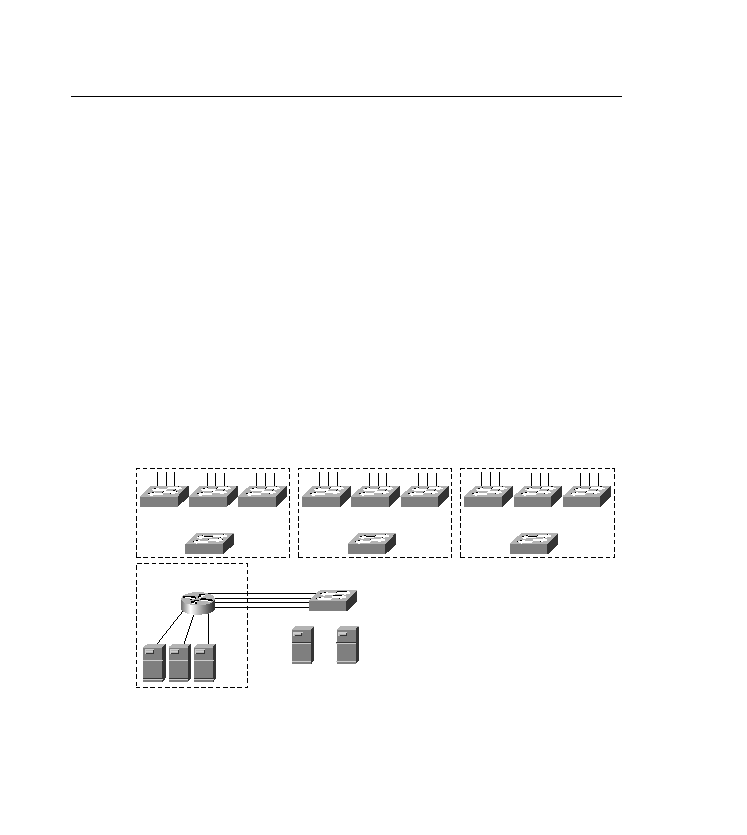
OSI reference model. Bridges connect and enable packet forwarding between different
networks. Three types of bridging dominate the bridging environment:
bridging is found primarily in Token Ring environments. Translational bridging provides a
means of translation between the formats and transit requirements of Ethernet and Token Ring.
Source-route transparent bridging combines the algorithms of transparent bridging and source-
route bridging to enable communication in mixed Ethernet/Token Ring environments.
internetworking solutions. Switching implementations dominate applications in which
bridging technologies were once implemented. Superior throughput performance, higher port
density, lower per-port cost, and greater flexibility are several factors that have contributed to
the emergence of switches as replacement technology for bridges. See Figure 2-3.